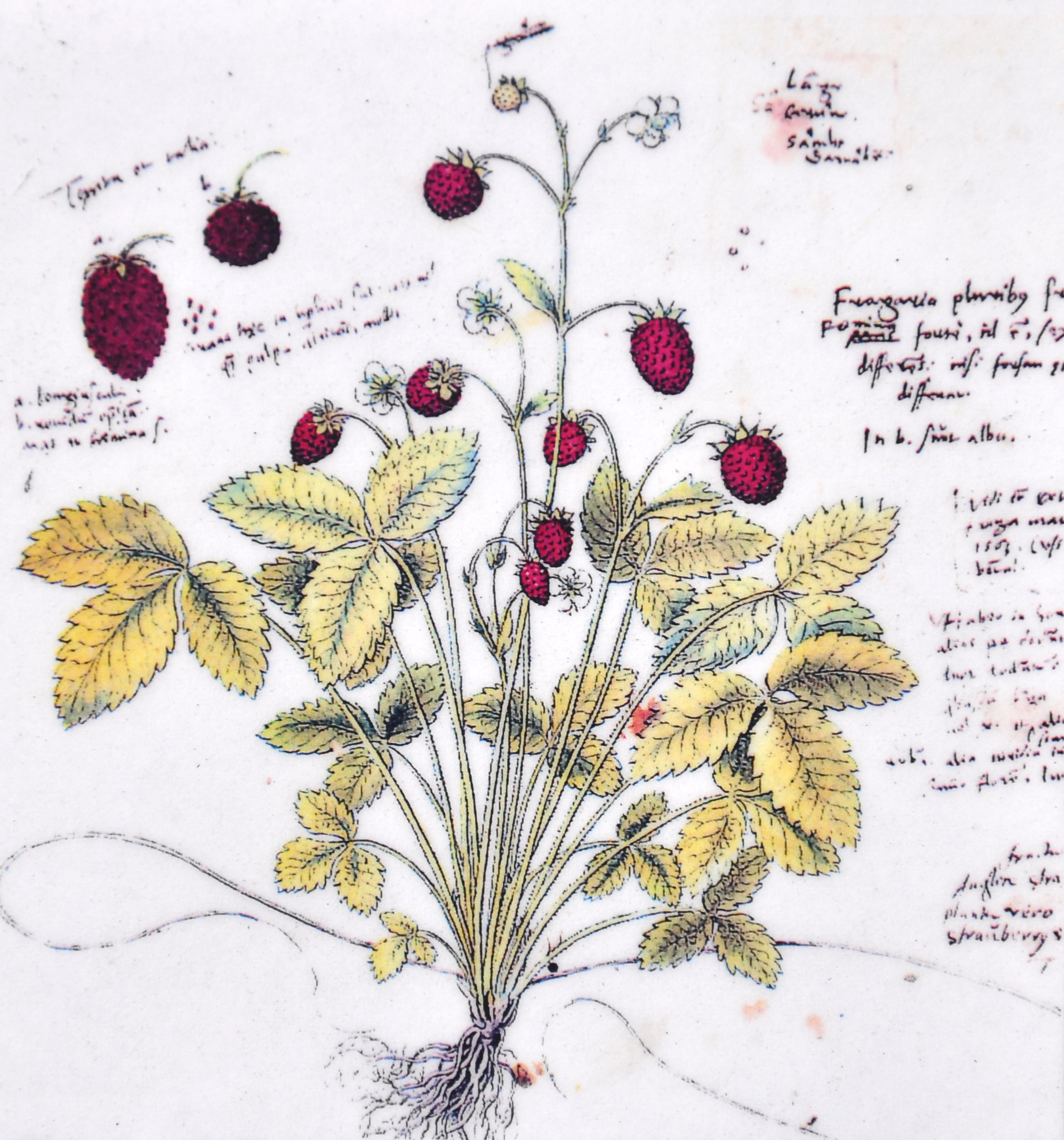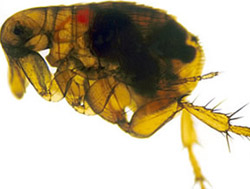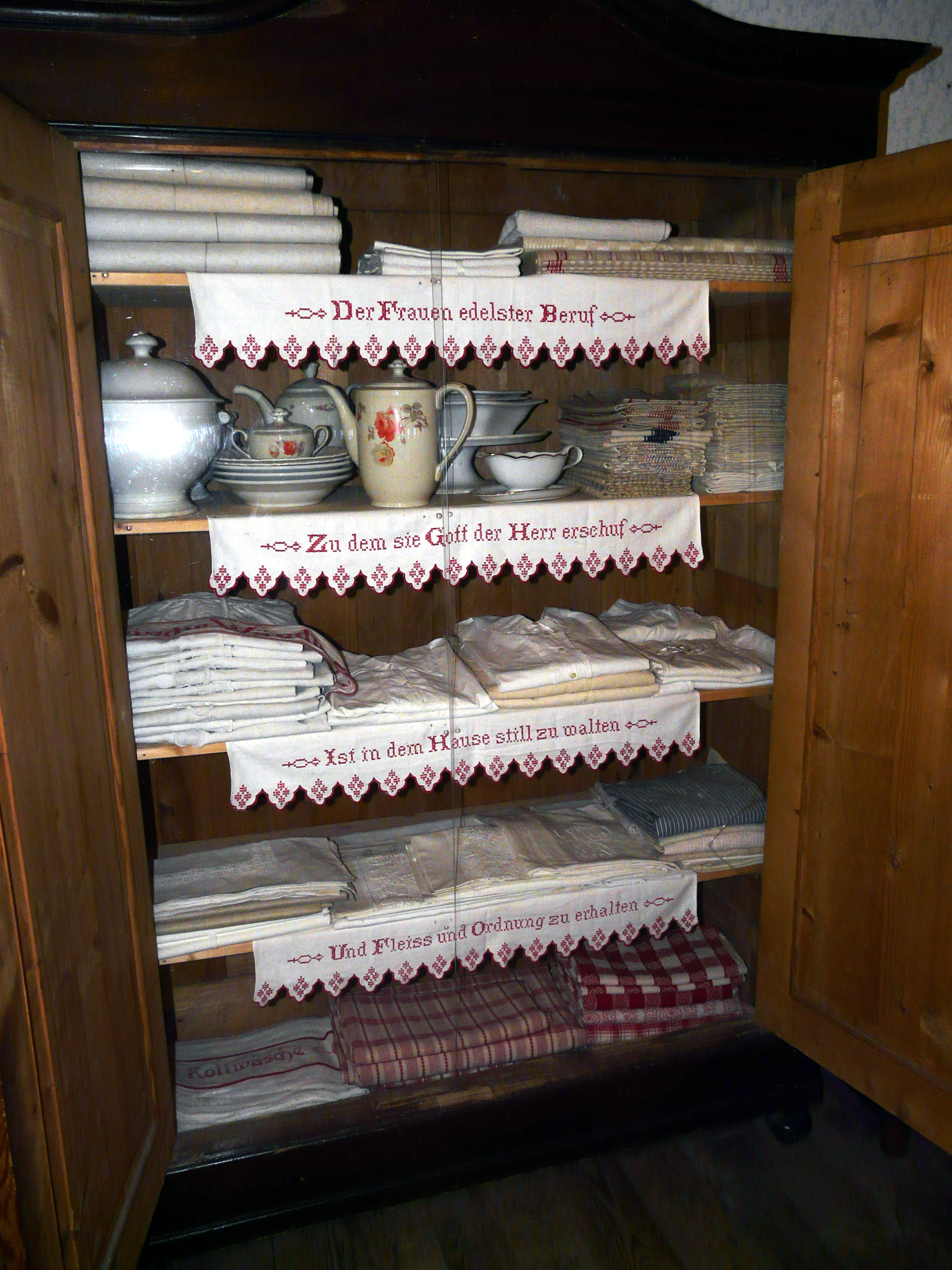|
Conrad Gessner
Conrad Gessner (; la, Conradus Gesnerus 26 March 1516 – 13 December 1565) was a Swiss physician, naturalist, bibliographer, and philologist. Born into a poor family in Zürich, Switzerland, his father and teachers quickly realised his talents and supported him through university, where he studied classical languages, theology and medicine. He became Zürich's city physician, but was able to spend much of his time on collecting, research and writing. Gessner compiled monumental works on bibliography ('' Bibliotheca universalis'' 1545–1549) and zoology ('' Historia animalium'' 1551–1558) and was working on a major botanical text at the time of his death from plague at the age of 49. He is regarded as the father of modern scientific bibliography, zoology and botany. He was frequently the first to describe species of plants or animals in Europe, such as the tulip in 1559. A number of plants and animals have been named after him. Life Conrad Gessner was born on 26 March ... [...More Info...] [...Related Items...] OR: [Wikipedia] [Google] [Baidu] |
Tobias Stimmer
Tobias Stimmer (7 April 1539 – 4 January 1584In the old style.) was a Swiss painter and illustrator. His most famous work is the paintings on the Strasbourg astronomical clock. Biography He was born in Schaffhausen, and was active in Schaffhausen, Strasbourg and Baden-Baden as a wall and portrait painter. He made a great number of drawings for woodcuts (Bible scenes, allegories, etc.) which were published by the printer Sigmund Feyerabend in Frankfurt am Main Frankfurt, officially Frankfurt am Main (; Hessian dialects, Hessian: , "Franks, Frank ford (crossing), ford on the Main (river), Main"), is the most populous city in the States of Germany, German state of Hesse. Its 791,000 inhabitants as o ..., and Bernhart Jobin in Strasbourg. Stimmer followed Hans Holbein the Younger, but developed his own mannerism. Among his wall paintings remain the "House zum Ritter" in Schaffhausen, although this was actually much restored and changed. References *Hans Lieb: ''Tobi ... [...More Info...] [...Related Items...] OR: [Wikipedia] [Google] [Baidu] |
Historia Animalium (Gessner Book)
''Historia animalium'' ("History of the Animals"), published at Zurich in 1551–1558 and 1587, is an encyclopedic "inventory of renaissance zoology" by Conrad Gessner (1516–1565). Gessner was a medical doctor and professor at the Carolinum in Zürich, the precursor of the University of Zurich. The ''Historia animalium'', after Aristotle's work of the same name. is the first modern zoological work that attempts to describe all the animals known, and the first bibliography of natural history writings. The five volumes of natural history of animals cover more than 4500 pages. Overview The ''Historia animalium'' was Gessner's magnum opus, and was the most widely read of all the Renaissance natural histories. The generously illustrated work was so popular that Gessner's abridgement, ''Thierbuch'' ("Animal Book"), was published in Zurich in 1563, and in England Edward Topsell translated and condensed it as a ''Historie of foure-footed beastes'' (London: William Jaggard, 1607). ... [...More Info...] [...Related Items...] OR: [Wikipedia] [Google] [Baidu] |
Bubonic Plague
Bubonic plague is one of three types of plague caused by the plague bacterium ('' Yersinia pestis''). One to seven days after exposure to the bacteria, flu-like symptoms develop. These symptoms include fever, headaches, and vomiting, as well as swollen and painful lymph nodes occurring in the area closest to where the bacteria entered the skin. Acral necrosis, the dark discoloration of skin, is another symptom. Occasionally, swollen lymph nodes, known as " buboes," may break open. The three types of plague are the result of the route of infection: bubonic plague, septicemic plague, and pneumonic plague. Bubonic plague is mainly spread by infected fleas from small animals. It may also result from exposure to the body fluids from a dead plague-infected animal. Mammals such as rabbits, hares, and some cat species are susceptible to bubonic plague, and typically die upon contraction. In the bubonic form of plague, the bacteria enter through the skin through a flea bite ... [...More Info...] [...Related Items...] OR: [Wikipedia] [Google] [Baidu] |
Dowry
A dowry is a payment, such as property or money, paid by the bride's family to the groom or his family at the time of marriage. Dowry contrasts with the related concepts of bride price and dower. While bride price or bride service is a payment by the groom, or his family, to the bride, or her family, dowry is the wealth transferred from the bride, or her family, to the groom, or his family. Similarly, dower is the property settled on the bride herself, by the groom at the time of marriage, and which remains under her ownership and control. Dowry is an ancient custom that is already mentioned in some of the earliest writings, and its existence may well predate records of it. Dowries continue to be expected and demanded as a condition to accept a marriage proposal in some parts of the world, mainly in parts of Asia, The custom of dowry is most common in cultures that are strongly patrilineal and that expect women to reside with or near their husband's family (patrilocality). D ... [...More Info...] [...Related Items...] OR: [Wikipedia] [Google] [Baidu] |
Battle Of Kappel
The Second War of Kappel (german: Zweiter Kappelerkrieg) was an armed conflict in 1531 between the Catholic and the Protestant cantons of the Old Swiss Confederacy during the Reformation in Switzerland. Cause The tensions between the two parties had not been resolved by the peace concluded after the First War of Kappel two years earlier, and provocations from both sides continued, fuelled in particular by the Augsburg Confession of 1530. Additionally, the Roman Catholic party accused Zürich of territorial ambitions. As the Catholic cantons refused to help the Three Leagues (''Drei Bünde'') in the Grisons during the Musso war against the Duchy of Milan, Zürich promptly considered this a breach of contracts between the confederacy and the Three Leagues and declared an embargo against the five alpine Catholic cantons, in which Bern also participated. While the ''Tagsatzung'' had successfully mediated in 1529, on this occasion the attempt failed, not least because Huldrych ... [...More Info...] [...Related Items...] OR: [Wikipedia] [Google] [Baidu] |
Strasbourg
Strasbourg (, , ; german: Straßburg ; gsw, label=Bas Rhin Bas-Rhin (; Alsatian: ''Unterelsàss'', ' or '; traditional german: links=no, Niederrhein; en, Lower Rhine) is a department in Alsace which is a part of the Grand Est super-region of France. The name means 'Lower Rhine', referring to its lowe ... Alsatian dialect, Alsatian, Strossburi , gsw, label=Haut Rhin Alsatian dialect, Alsatian, Strossburig ) is the Prefectures in France, prefecture and largest city of the Grand Est Regions of France, region of Geography of France, eastern France and the Seat of the European Parliament in Strasbourg, official seat of the European Parliament. Located at the France–Germany border, border with Germany in the historic region of Alsace, it is the prefecture of the Bas-Rhin Departments of France, department. In 2019, the city proper had 287,228 inhabitants and both the Eurométropole de Strasbourg (Greater Strasbourg) and the Arrondissement of Strasbourg had 505,272 inhabita ... [...More Info...] [...Related Items...] OR: [Wikipedia] [Google] [Baidu] |
University Of Paris
The University of Paris (french: link=no, Université de Paris), Metonymy, metonymically known as the Sorbonne (), was the leading university in Paris, France, active from 1150 to 1970, with the exception between 1793 and 1806 under the French Revolution. Emerging around 1150 as a corporation associated with the cathedral school of Notre Dame de Paris, it was considered the List of medieval universities, second-oldest university in Europe.Charles Homer Haskins, Haskins, C. H.: ''The Rise of Universities'', Henry Holt and Company, 1923, p. 292. Officially chartered in 1200 by King Philip II of France and recognised in 1215 by Pope Innocent III, it was later often nicknamed after its theological College of Sorbonne, in turn founded by Robert de Sorbon and chartered by List of French monarchs, French King Louis IX, Saint Louis around 1257. Internationally highly reputed for its academic performance in the humanities ever since the Middle Ages – notably in theology and philosophy – ... [...More Info...] [...Related Items...] OR: [Wikipedia] [Google] [Baidu] |
University Of Bourges
The University of Bourges (french: Université de Bourges) was a university located in Bourges, France. It was founded by Louis XI in 1463 and closed during the French Revolution. Until the mid-17th century, lack of suitable legal training at home meant many Scots seeking to practice law studied at Bourges, Paris or Orléans; thereafter, most did so at Leyden University in the Dutch Republic. Notable alumni * Patrick Adamson (1543–1591) * John Calvin (1509–1564) * Hugues Doneau (1527–1591) * Francois Douaren (1509–1559) * Conrad Gessner (1516–1565) * Franciscus Junius (the elder) (1545–1602) * Esmé Stewart, 3rd Duke of Lennox (1579–1624) See also * List of medieval universities The list of medieval universities comprises universities (more precisely, '' studia generalia'') which existed in Europe during the Middle Ages.Rüegg 1992, pp. XIX–XX It also includes short-lived foundations and European educational ins ... References Sources * * J.-Y ... [...More Info...] [...Related Items...] OR: [Wikipedia] [Google] [Baidu] |
Plutus (play)
''Plutus'' ( grc, Πλοῦτος, ''Ploutos'', "Wealth") is an Ancient Greek comedy by the playwright Aristophanes, which was first produced in 388 BCE. A political satire on contemporary Athens, it features the personified god of wealth Plutus. Reflecting the development of Old Comedy towards New Comedy, it uses such familiar character types as the stupid master and the insubordinate slave to attack the morals of the time. Plot The play features an elderly Athenian citizen, Chremylos, and his slave Cario or Carion. Chremylos presents himself and his family as virtuous but poor, and has accordingly gone to seek advice from an oracle. The play begins as he returns to Athens from Delphi, having been instructed by Apollo to follow the first man he meets and persuade him to come home with him. That man turns out to be the god Plutus — who is, contrary to all expectations, a blind beggar. After much argument, Plutus is convinced to enter Chremylos's house, where he will have his ... [...More Info...] [...Related Items...] OR: [Wikipedia] [Google] [Baidu] |
Aristophanes
Aristophanes (; grc, Ἀριστοφάνης, ; c. 446 – c. 386 BC), son of Philippus, of the deme Kydathenaion ( la, Cydathenaeum), was a comic playwright or comedy-writer of ancient Athens and a poet of Old Attic Comedy. Eleven of his forty plays survive virtually complete. These provide the most valuable examples of a genre of comic drama known as Old Comedy and are used to define it, along with fragments from dozens of lost plays by Aristophanes and his contemporaries. Also known as "The Father of Comedy" and "the Prince of Ancient Comedy", Aristophanes has been said to recreate the life of ancient Athens more convincingly than any other author. His powers of ridicule were feared and acknowledged by influential contemporaries; Plato singled out Aristophanes' play '' The Clouds'' as slander that contributed to the trial and subsequent condemning to death of Socrates, although other satirical playwrights had also caricatured the philosopher. Aristophanes' second pla ... [...More Info...] [...Related Items...] OR: [Wikipedia] [Google] [Baidu] |
Penia
In Plato's ''Symposium'', Penae ("deficiency" or "poverty" in Latin) or Penia (; "deficiency" or "poverty" in Greek) was the personification of poverty and need. She married Porus at Aphrodite's birthday and was sometimes considered the mother of Eros. Her sisters are Amechania and Ptocheia. Penia was also mentioned by other ancient Greek writers such as Alcaeus (Fragment 364), Theognis (Fragment 1; 267, 351, 649), Aristophanes (''Plutus'', 414ff), Herodotus, Plutarch (''Life of Themistocles''), and Philostratus (''Life of Apollonius''). Mythology General Portrayal Penia was the Goddess of Poverty. Although she was despised by many, she played an important role in teaching mankind to stay humble and productive. In her portrayal by the playwright Aristophanes, Penia attempts to convince two foolish men about the dangers of allowing wealth to be abundant for everybody. She debates the issue of motivation among those who are wealthy; by acquiring a luxurious life, humans wil ... [...More Info...] [...Related Items...] OR: [Wikipedia] [Google] [Baidu] |
Classical Languages
A classical language is any language with an independent literary tradition and a large and ancient body of written literature. Classical languages are typically dead languages, or show a high degree of diglossia, as the spoken varieties of the language diverge further away from the classical written language over time. Classical studies In the context of traditional European classical studies, the "classical languages" refer to Greek and Latin, which were the literary languages of the Mediterranean world in classical antiquity. Greek was the language of Homer and of classical Athenian, Hellenistic and Byzantine historians, playwrights, and philosophers. It has contributed many words to the vocabulary of English and many other European languages, and has been a standard subject of study in Western educational institutions since the Renaissance. Latinized forms of Ancient Greek roots are used in many of the scientific names of species and in other scientific terminology. Koin ... [...More Info...] [...Related Items...] OR: [Wikipedia] [Google] [Baidu] |





